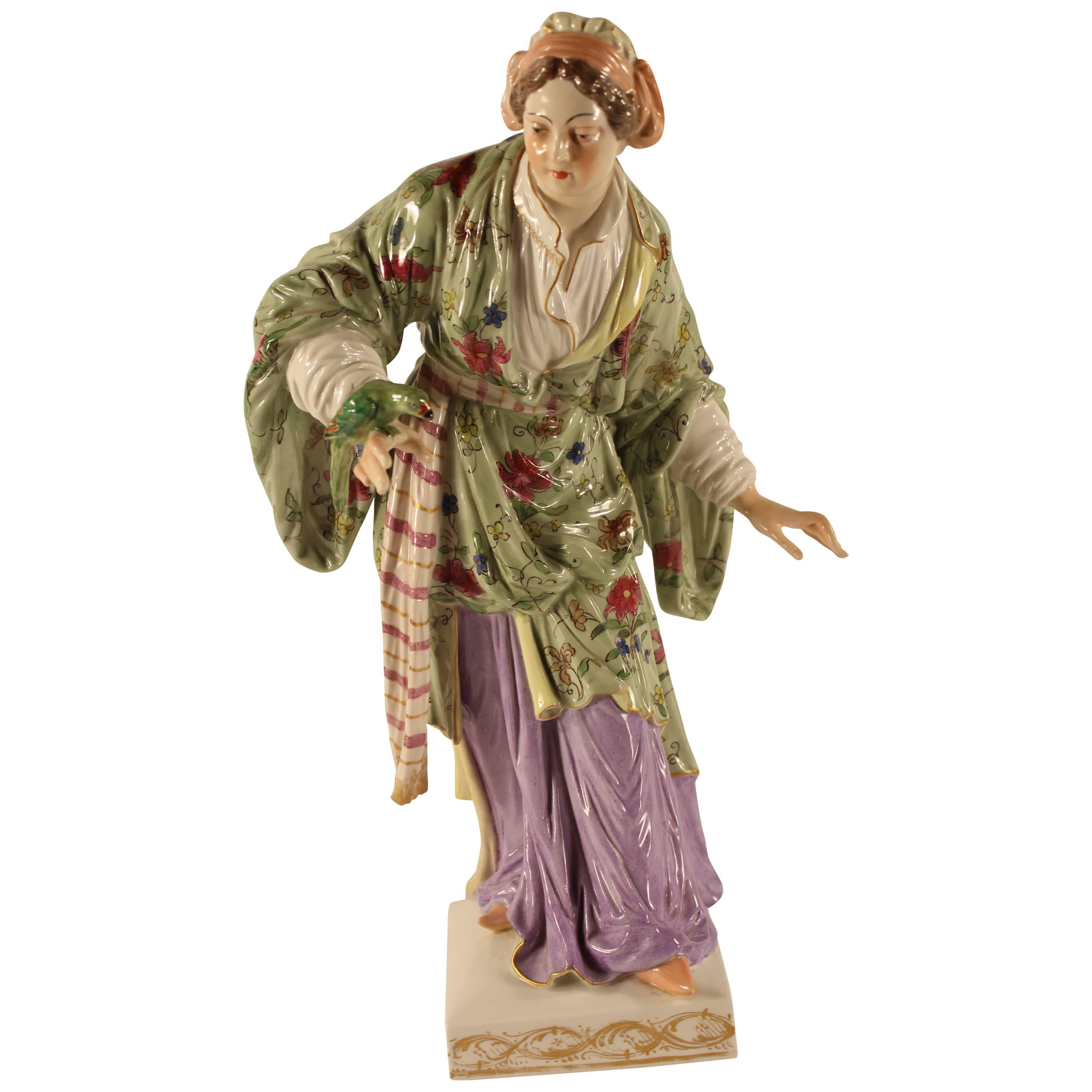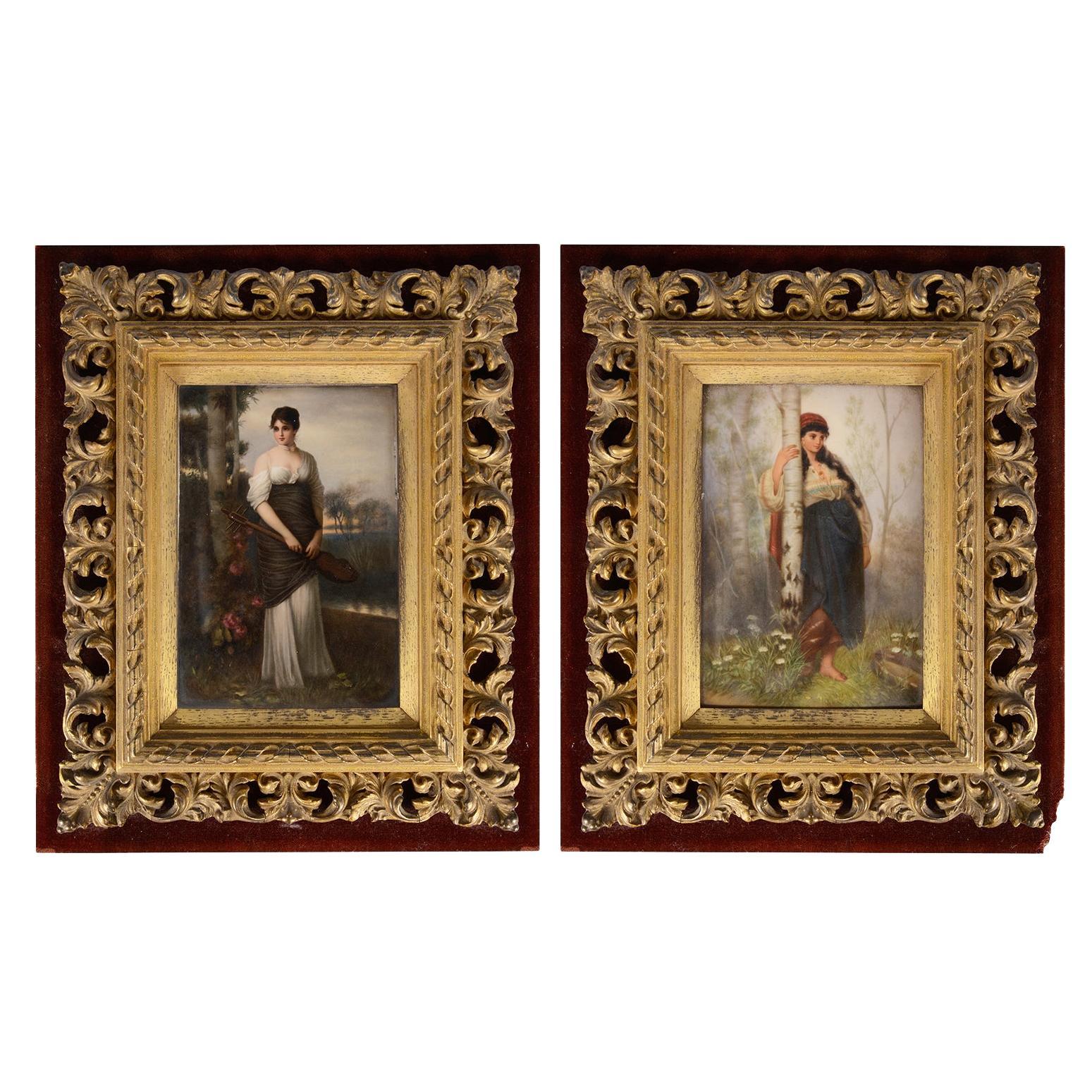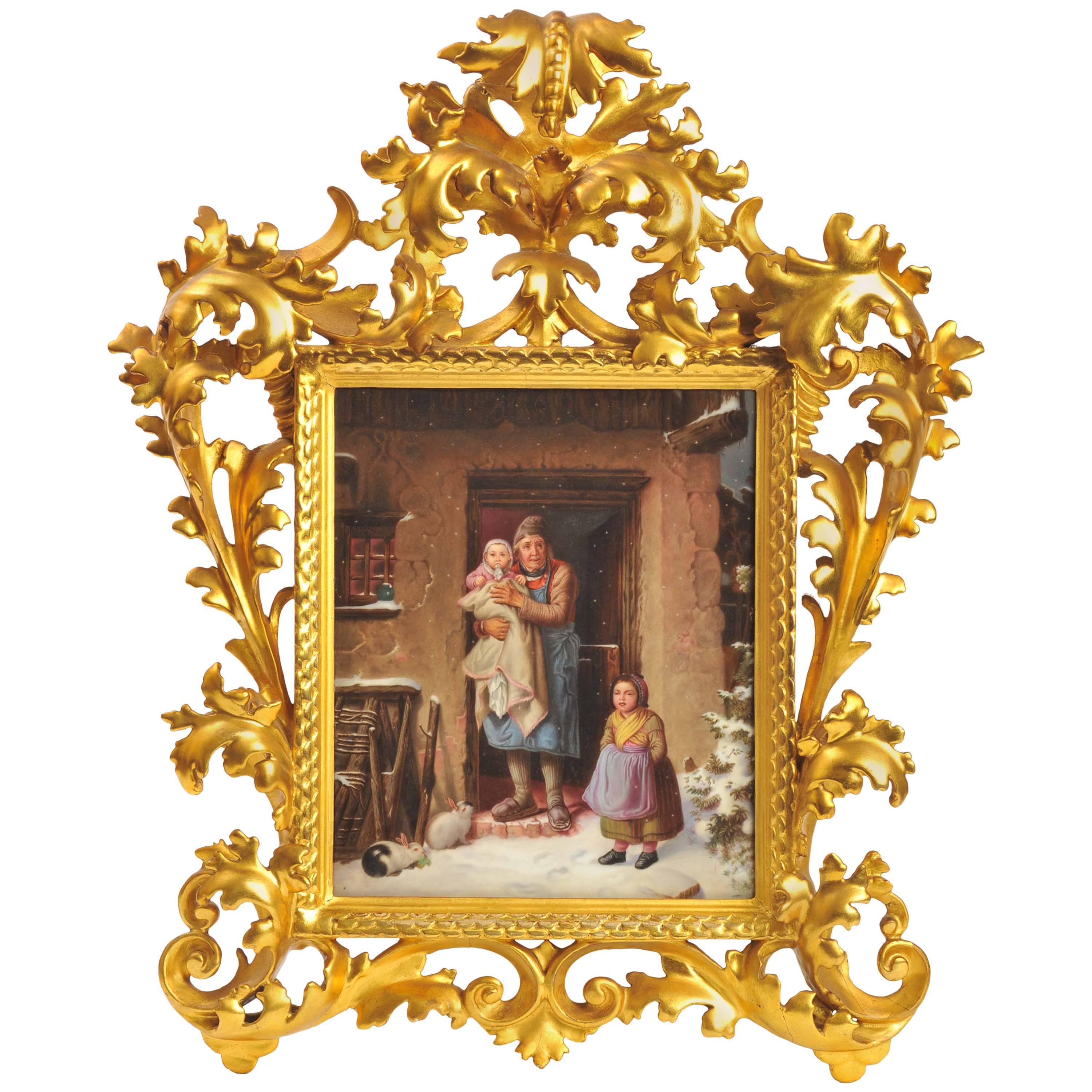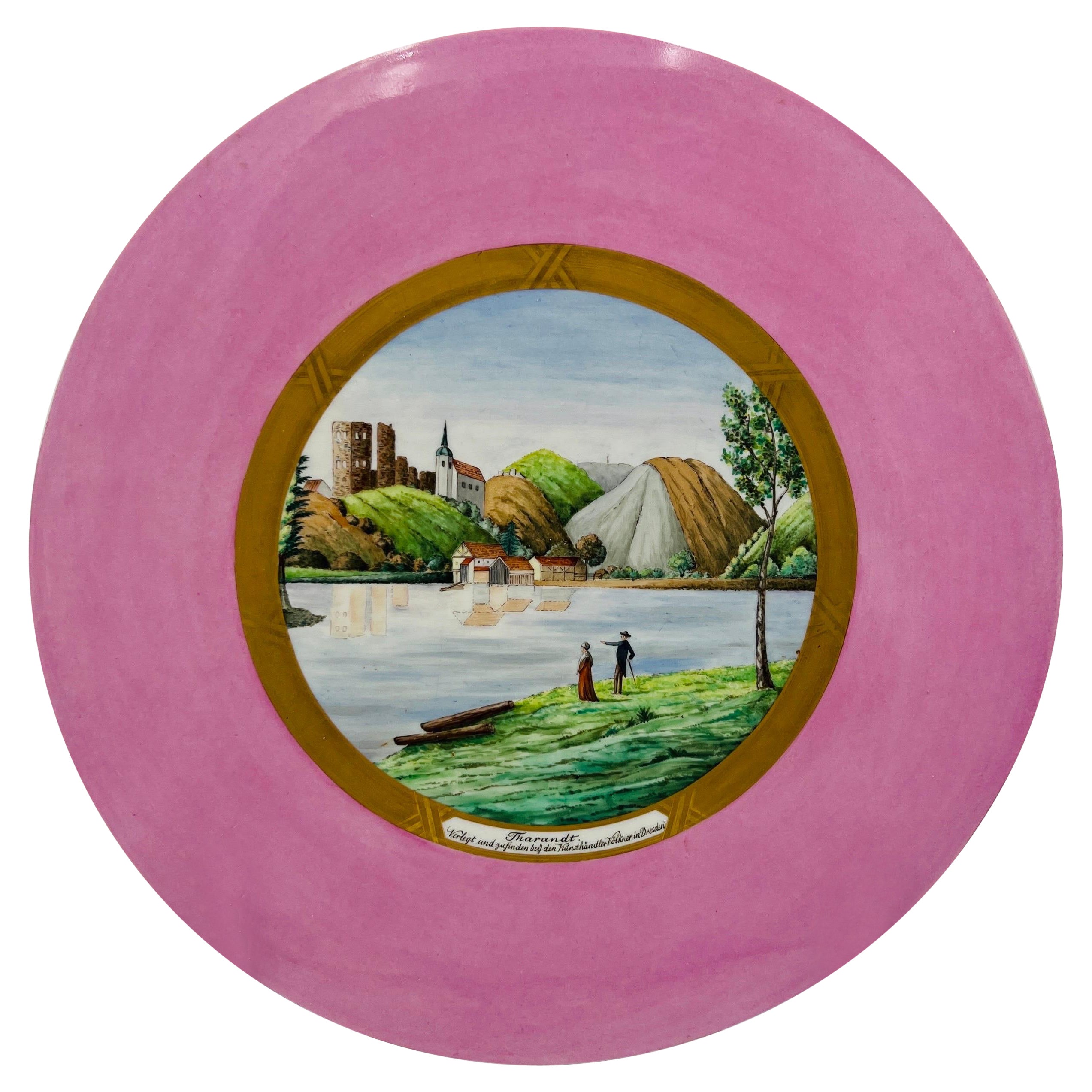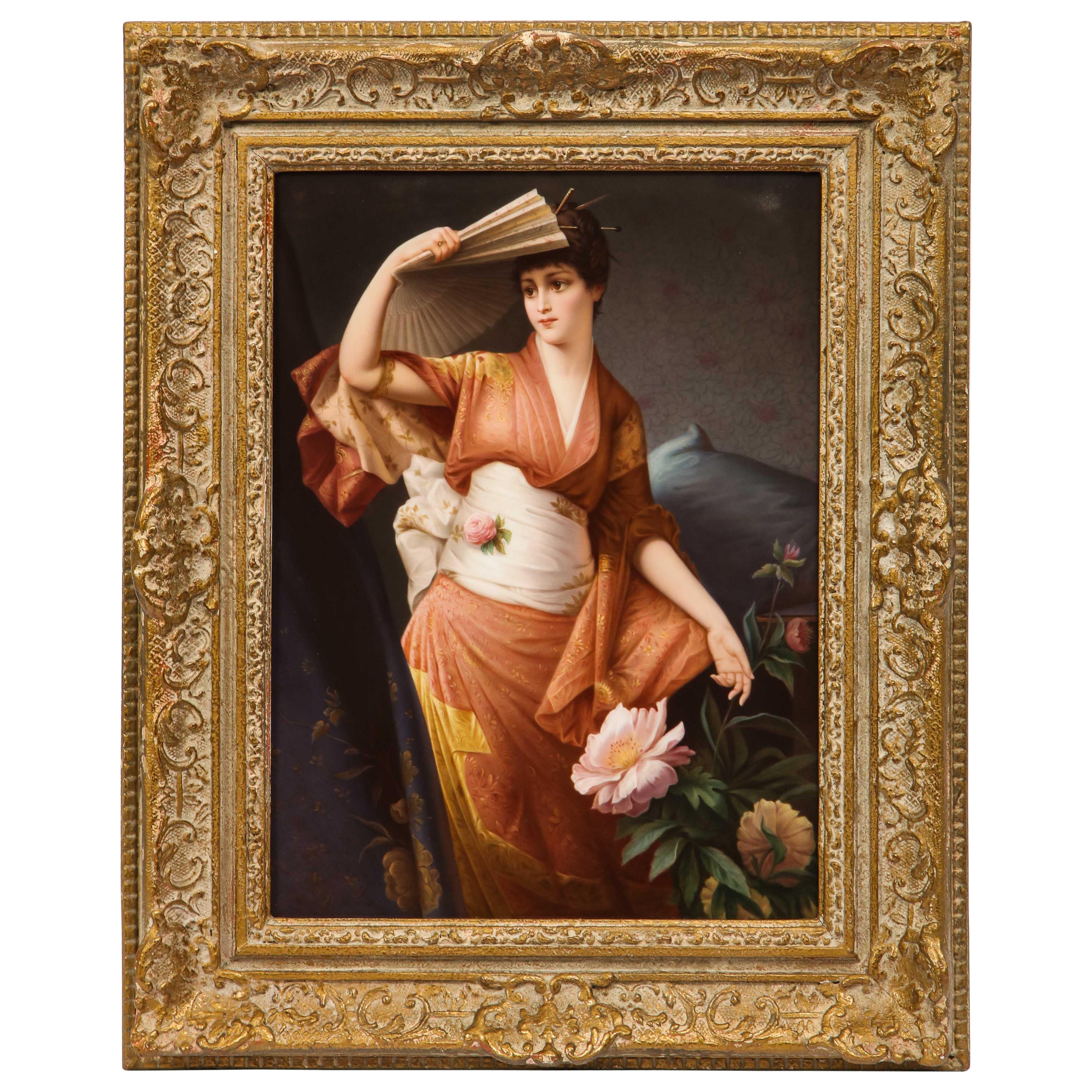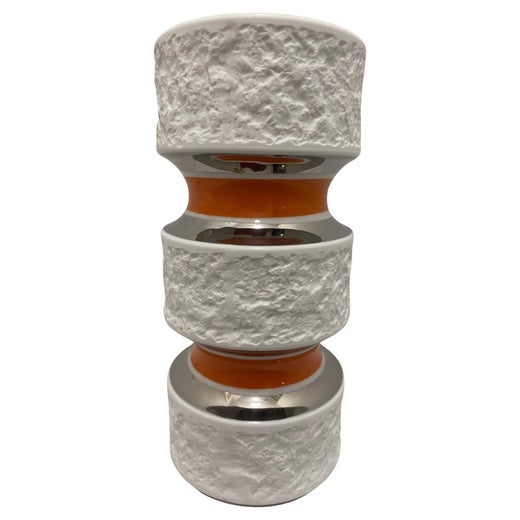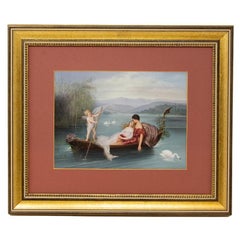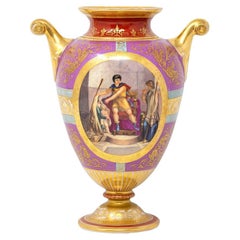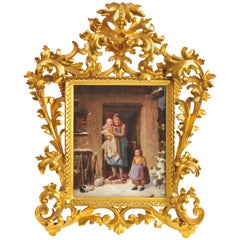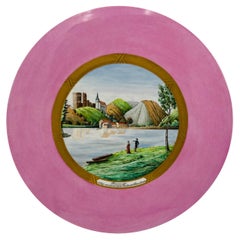Pair of KPM Porcelain Plaques Franz Wagner Signed Sceptre Mark 19th Century
About the Item
- Creator:Wagner Kpm (Maker),Franz Wagner (Painter),KPM Porcelain (Maker),Königliche Porzellan-Manufaktur (KPM) (Maker)
- Dimensions:Height: 3.15 in (8 cm)Width: 11.82 in (30 cm)Depth: 14.97 in (38 cm)
- Style:Art Nouveau (Of the Period)
- Materials and Techniques:
- Place of Origin:
- Period:
- Date of Manufacture:Circa 1890
- Condition:Wear consistent with age and use. Minor losses. Plaques in good condition, frames have some small amounts of wear and minor losses around the gesso particularly to the scrollwork but are original and untouched.
- Seller Location:Newark, GB
- Reference Number:Seller: ATDD1stDibs: LU6971240496502
Königliche Porzellan-Manufaktur (KPM)
Known by just KPM, the Königliche Porzellan-Manufaktur company has been synonymous with exquisite porcelain works fit for nobility and royalty for over 200 years. KPM porcelain plates, centerpieces and sculptures are painstakingly formed through ages-old techniques and meticulously painted by hand, producing one-of-a-kind quality.
KPM began in Berlin in 1763, founded by King Frederick II of Prussia, after two other entrepreneurs had been unsuccessful in establishing porcelain manufacturing companies in Germany. In 1878, KPM developed a relationship with the Chemical-Technical Research Institute and its director, Hermann Seger. This partnership gave KPM early access to advances in porcelain production and coloration.
KPM flourished under the banner of royal ownership until 1918, when it became a state-run entity after the monarchy was disbanded following Germany’s loss in World War I. With the rise of the Nazi Party in the 1930s, many of the company’s top designers and directors were dismissed, denied exhibitions or forced to flee Germany due to Jewish heritage or loyalty to Jewish colleagues. In 1943, an Allied bombing raid destroyed the KPM factory, and the company was not reestablished until after the war.
KPM reopened in Franconia and began producing porcelain wares. Some staff also worked on reconstructing the historic KPM site in Berlin. In 1957, manufacturing returned to the original company premises.
KPM rebounded over the next few decades. In 2006, in a step to privatize companies throughout the country, German financier Jörg Woltmann bought the organization.
Since its privatization, the company has opened many galleries and shops around Germany and has worked in collaboration with notable brands like Bottega Veneta and Bugatti motor company in recent years.
Although rooted in the Rococo style, KPM has adapted its craft to meet the current trends, all while maintaining the highest levels of excellence throughout its centuries of operation. It continues to produce lavish, elegant porcelain works for elite clientele the world over.
On 1stDibs, browse a vast selection of Königliche Porzellan-Manufaktur serveware, decorative objects, lighting and more.
KPM Porcelain
The Königliche Porzellan-Manufaktur Berlin, or KPM (Royal Porcelain Factory, Berlin, in English) was one of the most influential porcelain factories to emerge in 18th-century Germany, along with Nymphenburg and Meissen. KPM was the third incarnation of a company originally founded in 1751 by Wilhelm Caspar Wegely to take advantage of the burgeoning market for “white gold.” On the verge of bankruptcy, Wegely sold his inventory and tools to Johann Ernst Gotzkowsky, who in 1761 established another porcelain factory, which also failed, and was subsequently taken over by Frederick II of Prussia in 1763. Like Augustus II, Elector of Saxony, the patron of Meissen and a keen collector who described himself as suffering (quite happily) from “porcelain sickness,” Frederick II was proud to refer to himself as KPM’s “best customer.” KPM produces china and figurines to this day, and throughout its long history, it has been a style-setter for elegant tableware, particularly in the 1930’s, the period during which their popular patterns Urbino, Urania and Arkadia were designed.
Thanks to its royal patronage, KPM had the resources and contacts necessary to establish itself as a leading luxury producer, and supplied Russian and European elites with tableware in the Rococo and Neoclassical styles, as well as monumental vases, and decorative plaques. Many of these objects can be found today in major museums as a result of Frederick II’s penchant for sending KPM porcelain as diplomatic gifts throughout Europe. Unlike Meissen, which was known for crafting porcelain sculptures of dazzling complexity, KPM is revered for the precision and splendor of its surface decoration, and for its porcelain plaques depicting scenes from history and mythology. One especially lovely example circa 1790 is a neocalssical-style tea service decorated with gold accents and a grisaille design of figures from the ancient world. By contrast, this boldly colorful narrative cup and saucer set from the 1840’s depicts scenes from real life as colorfully as a painting. The set was commissioned by a gentleman for his wife as a tongue-in-cheek gift commemorating her misadventures while in town for a visit to the opera, which resulted in her opera glasses being stolen. The saucer shows the thief and the glasses, and the cup reveals the scene of the crime in vivid hues.
KPM was forced to move from its original location in 1867 due to the building of the new Prussian Parliament building, and this afforded the company the opportunity to to create a new factory with the newest equipment and materials of the day. With the growing popularity of Art Nouveau and the western fascination with Asian ceramics, KPM began formulating glazes that evoked the color palette and rich surfaces of Chinese porcelain. By the turn of the century, KPM was exhibiting its wares to a global audience at international expositions. At the end of World War I with the collapse of the Prussian monarchy, KPM was renamed the State Porcelain Manufactory Berlin, continuing to use the name KPM and its use of the cobalt blue sceptre mark that is painted on the bottom of every piece.
By the late 1920’s, the designers and craftsmen of KPM were inspired by the tenets of Modernism, particularly the styles of the Bauhaus and the Deutscher Werkbund. During this period, the firm’s aim was to produce useful household porcelain for a range of consumers, rather than catering to a small elite. Among the most successful patterns of this era was designer Trude Petri’s Urbino line, which is still produced today. Following World War II, KPM was temporarily housed in the town of Selb, and only returned to its rebuilt quarters in Berlin in 1957. In the 1980s, KPM became an private company independent of the state, and began to focus production on the preservation of historic forms, designs, and techniques. KPM continues to collaborate with designers from all over the world, most recently on the Berlin dinnerware service with designer Enzo Mari, and a collaboration with the luxury brands Bottega Veneta and Bugatti.
- ShippingRetrieving quote...Shipping from: Newark, United Kingdom
- Return Policy
More From This Seller
View AllAntique Late 19th Century German Baroque Revival Decorative Art
Ceramic, Porcelain
Antique Late 19th Century German High Victorian Decorative Art
Porcelain
Antique Late 19th Century Austrian Classical Roman Vases
Ceramic, Porcelain
Antique Late 19th Century Austrian High Victorian Tea Sets
Ceramic, Porcelain
Antique Late 19th Century Austrian Ceramics
Ceramic, Porcelain
Antique Late 19th Century Austrian Belle Époque Ceramics
Ceramic, Porcelain
You May Also Like
Antique 19th Century German Aesthetic Movement Figurative Sculptures
Porcelain
Antique 19th Century Austrian Romantic Porcelain
Porcelain
Antique 1860s European Porcelain
Porcelain
Early 20th Century German Ceramics
Porcelain
Antique 19th Century German Romantic Porcelain
Porcelain
Antique 19th Century German Japonisme Paintings
Porcelain
